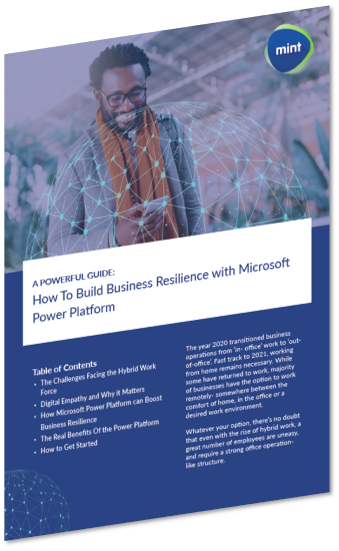So here is a sentence that we have heard way too often: This is the new normal and change is the only consistency. That, and “you are on mute…”
Things are seemly getting back to what we used to be used to, before we adapted to what we have ever known. Working from home and distancing ourselves from everything we have ever known (I will give you a moment to read that again). And now, we need to acclimatize to going back to the office. But when we get back to the office, it feels like we are working in a hamster cage and running around as if we are in an episode of Squid Games. A question to consider: do we need to go back?
The Changing Work Landscape: What is FSI doing?
Looking at trends within the financial services sector, there are mixed business reactions. Some companies are forcing staff to come back into the office and some are completely adopting a hybrid model with more emphasis on working remotely. The former feels more like a power play by management teams who feel they are losing their traditional control. With that said, I am sure this point can be argued to death by opposing views. The latter, to me anyway, is a more forward-thinking approach by businesses who are leveraging the technology available, and the ethos that FinTech used to disrupt “Big Corporate”.
Over the last few years, we have seen how FinTech has been able to disrupt the market by using tech tof their advantage. Helping them be more agile in response to client demands, product development, and navigating the traditional necessity for expensive office rentals, and physical infrastructure. Some could say, they have always worked from home, or never been in the office.
Is it Possible to Have a Work-Life Balance?
You see, leveraging cloud technologies such as Microsoft Azure, Microsoft 365, and Dynamics 365 enables both organizations and employees to be productive in a very secure manner. The exact same technology is now available to all levels of business, without the extreme initial overheads, and complicated physical infrastructure and maintenance.
Companies need to adapt to this new-age way of work and accelerate digital workforce strategies. Take Nedbank for example, based on an article published in July 2021, they have truly embraced their “Digital-first and first in digital” aspiration.
This hybrid approach leads to a more flexible working model, allowing for people to have a better work-life balance. Yes, this too can be debated as some people are unable to walk away from their laptops and emails. With that said, then maybe the people who struggle to switch off from work, should go back into the office where there is more structure. I don’t know, this is just a thought.
FNB expects 40% of their staff to return to work overtime, with Standard Bank also embracing this digital trend.
The Perks of Being in Office vs Out of Office
I for one do miss and enjoy social interaction with my peers. A quick 5–minute discussion around a coffee machine leads to problem-solving and idea generation that would take a plethora of email back-and-forth nonsense, then a Teams meeting about having another meeting… and so the cycle goes. Working from home, I have become more productive. Completing tasks quicker than I would have done back at the office, because there is never just one 5–minute coffee, and it is never just 5 minutes.
And now to throw the cat amongst my own pigeons… does being more efficient and productive mean being more proactive? Let me elaborate; the tech we leverage helps us do things quicker, better, and faster, we get that, that’s a no-brainer, but do we necessarily do more when it comes to business productivity? I don’t think it does. Now, let us throw a dog amongst the cat with the pigeons; we make the most of our time now for ourselves and our mental and emotional wellbeing, as we now have more time for the important things during the traditional 9 to 5 grind; ourselves and our families.
Tech for Good: What Happens When We Disconnect
One of the biggest pandemics we are now facing is Mental Health. Social media has been a source for most of the information consumed around updates, and what is happening in the world we now live in. The problem is that, where there is a lot of accurate information being spread, there is an abundance of misinformation which can lead to fear-mongering and anxiety. And even though we know this to be the case, we continue to subscribe our lives to these services. Social media does however have a lot of positive attributes. It helps us connect to friends and family that are down the road or in other countrys. There are support groups that leverage the respective platforms to reach people that they would never have access to, if it wasn’t for the technology that these social media platforms utilize. The world has become a lot smaller for so many good reasons. Tech for good.
And then it stopped working! October 4th, 2021.
Talk about a cataclysmic event. This was huge. Not only did this outage affect people in their personal lives, but organizations that rely on these services were disconnected from the world. Millions of revenues were lost and anxiety caused, as people rushed to figure out how they could get back online. So not a good example of cloud technology… or is it?
Business Continuity: Reflecting on Why Organizations Need the Cloud
Imagine this was your business server. Imagine the server had capitulated on itself and you hadn’t done the necessary back-ups on time. Imagine the only person who could have fixed it, was off ill, immobilized, or out of town with no way of getting back to get you back online. The reality is that all companies impacted by this outage had some form of recourse due to SLA’s and uptime commitments, and were able to continue as they always did, with all their restored information at hand. The information would have been shared across multiple servers to manage risk, all under intense encryption and multiple teams working on the resolution, which, quite frankly, would be out of most organizations’ budgets if they would have it in-house.
Conclusion
Let’s go back to the start. Organizations should consider a hybrid approach of remote and in–office work. Offer both to staff, and where it makes sense, empower them to make their own decisions as to what works best for them. The spin-off is maintaining a motivated workforce where employees can express themselves and will feel more comfortable when needing to or being asked to come into the office. People need leadership now more than ever, and they need to feel like they are heard, and empower them to embrace the new world of work ensuring their wellness is still top of mind. Organizations also need to equip them with the tools they need to perform at their best. I am not saying that business’ now need to recklessly invest in cloud solutions, but rather readdress their business strategies when it comes to digital and the people, skills and services that it can enable – the business and the employee. Do your due diligence and speak to partners who have assisted in enabling and helping organizations, to really digitally transform.
See How To Build Business Resilience with Microsoft Power Platform
The year 2020 transitioned business operations from ‘in-office’ work to ‘out-of-
office’. Fast track to 2021, working from home remains necessary. While some have returned to work, the majority of businesses have the option to work remotely- somewhere between the comfort of home, in the office, or the desired work environment.
In this Free Product Guide, you will receive:
- The Challenges Facing the Hybrid Work Force
- Digital Empathy and Why it Matters
- How Microsoft Power Platform can Boost Business Resilience
- The Real Benefits Of the Power Platform
- How to Get Started






